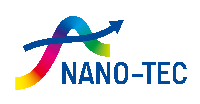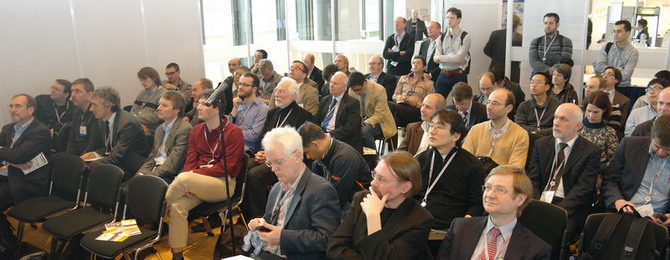

ICT-2010-257964
Session 7 - Neuromorphic Computing
 |  |
| Presenter: Julie Grollier, CNRS-Thales, Palaiseau | Discussion on neuromorphic Computing led by Dag Winkler, Chalmers University, Sweden |
Download the presentaion on Neuromorphic Computing
JULIE GROLLIER, Centre National de la Recherche Scientifique, Thales, Palaiseau, France
Julie Grollier, born in 1975, first graduated from the engineering institute Ecole Supérieure d’Electricité before obtaining a diploma from the Ecole Normale Superieure de Cachan. Her Ph.D., obtained in 2003 and supervised by Albert Fert, focused on “Spin transfer induced magnetization switching”. This spintronic phenomena allows to manipulate the magnetization of nano-objects simply by current injection, without the help of an applied external magnetic field. As a post-doc, first in Groningen University (Netherlands, group of B.J. van Wees), then in the Institut d’Electronique Fondamentale (France, group of C. Chappert), she studied the magnetization dynamics of nano-magnets. In 2005, she received a permanent position as a researcher in the Joint Unit CNRS/Thales, where she is leading the Spin Transfer Nano-Oscillators team together with her colleague Vincent Cros.
In 2010 she was awarded the “Jacques Herbrand” prize of the French Academy of Science, for her pioneer work on spin transfer. The same year, she received a European Research Council grant to start a new project on Memristive Artificial Synapses and their integration in Neural Networks (ERC starting grant “NanoBrain”).
Abstract
Memristors are nanometer size non-volatile tunable resistances. The resistance state of these devices can be changed by varying the voltage or the current across the structure. Depending on the memristor type, the resistive switching effects can be due to several different physical effects, ranging from red-ox to charge-induced, phase change or purely electronic phenomena.
Practically, due to the possibility to easily manipulate their resistance state, these electronic nano-devices have a number of extremely promising applications, such as digital memories (Resistive Switching RAMs), switches and latches for advanced logic functions etc. In addition, since their resistance can in general be tuned over several orders of magnitude, it should be possible to stack densely these components in large-scale cross-bar arrays.
One of the most fascinating properties of memristors is that they intrinsically behave like synapses, which could be a key to the future development of hardware Artificial Neural Networks (ANNs), and revolutionize non-conventional neuromorphic computing.
This talk will be a review of the state of the art of memristor devices and their applications, with a special focus on their implementation as artificial synapses for on-chip neural networks.

